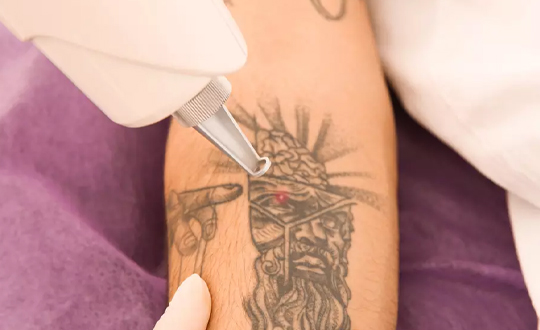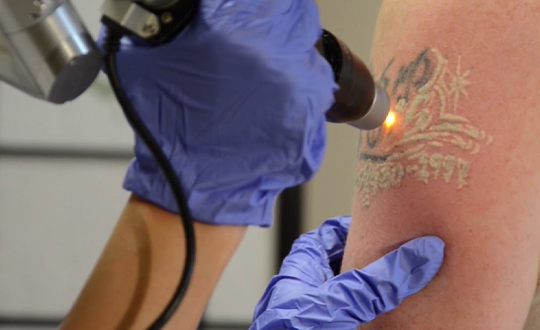Laser tattoo removal is a noninvasive method for removing or fading unwanted tattoos. It uses advanced laser technology. A laser device emits short pulses of high-intensity light during the laser tattoo removal treatment. This laser lighting penetrates the skin and targets the tattoo ink particles. The color of ink absorbs the laser energy, causing it to break down into smaller fragments. Which are then naturally destroyed by the body’s immune system. It needs multiple treatments to completely remove a tattoo. This process can require multiple sessions over several weeks or months. This depends on factors like The tattoo’s size and color. The age of the patient and the location of the tattoo. The patient’s skin type and overall health.


These are the most commonly used machines for tattoo removal. They emit high-energy, short pulses of light that break down the ink particles. Q-switched lasers come in various types, each with a specific wavelength, such as Nd: YAG, Ruby, and Alexandrite.
Whether you have a big or small tattoo, there will be a number of treatments for laser removal. The stages of a laser tattoo removal procedure typically include the following:
